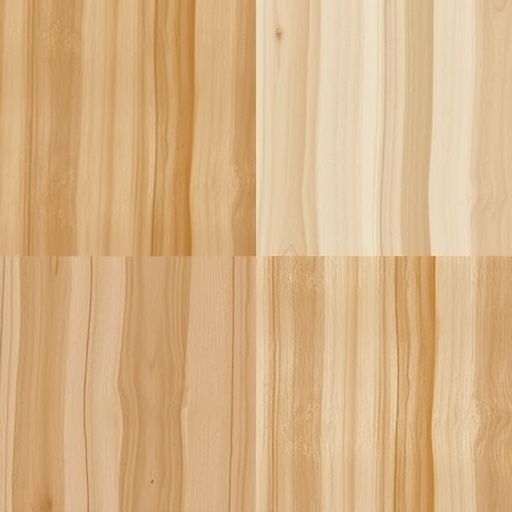Recent advancements in battery technology have underscored the urgent need for innovative electrode materials that can enhance performance across a variety of operating conditions. A significant breakthrough in this field has emerged from the findings of a study led by Xu et al., which delves into the performance differences of poplar-derived hard carbon materials when subjected to diverse experimental conditions. Their work, published in the renowned journal Ionics, lays the groundwork for optimizing these carbon materials in energy storage applications.
The term “hard carbon” refers to a specific type of non-graphitizable carbon, which exhibits a structurally disordered arrangement. This unique structure enables hard carbon materials to exhibit remarkable electrochemical properties, including excellent cycle stability and high capacity for lithium storage. Xu and colleagues honed in on the characteristics of hard carbon derived from poplar wood, offering an eco-friendly and sustainable alternative to traditional carbon sources in battery manufacturing.
Understanding the electrochemical behavior of these hard carbon materials is critical for their application in lithium-ion batteries. When tested under various charging and discharging rates, Xu et al. discovered significant variances in performance. The researchers meticulously quantified these performance metrics, illustrating how factors such as temperature, charge-discharge cycles, and current density can affect the materials’ electrochemical efficiency.
.adsslot_H7hDd8Byae{width:728px !important;height:90px !important;}
@media(max-width:1199px){ .adsslot_H7hDd8Byae{width:468px !important;height:60px !important;}
}
@media(max-width:767px){ .adsslot_H7hDd8Byae{width:320px !important;height:50px !important;}
}
ADVERTISEMENT
One of the key findings of the study revealed that the thermal treatment of the poplar-derived hard carbon significantly influenced its capacitance and resistance characteristics. The researchers employed different pyrolysis temperatures to optimize the structural and electronic properties of the carbon. Their results suggest that higher pyrolysis temperatures lead to an improved carbonization process, which in turn enhances the material’s overall electrochemical performance.
Interestingly, the structural integrity of the hard carbon was found to play a pivotal role in its performance stability. Xu et al. utilized advanced characterization techniques, including X-ray diffraction and Raman spectroscopy, to analyze the molecular architecture of the carbon materials. Their findings highlight a direct correlation between the structural features of hard carbon and its lithium-ion storage capacity, shedding light on the nuances of carbon material engineering for battery applications.
In addition to investigating the intrinsic properties of the carbon materials, the research team also explored the implications of varying external conditions on battery functionality. They systematically tested the performance of poplar-derived hard carbon electrodes at different humidity levels and ambient temperatures. Their comprehensive analysis indicated that these environmental factors significantly impact charge transfer rates, ultimately influencing the efficiency and longevity of the batteries being tested.
Furthermore, the researchers acknowledged the importance of scalability and cost-effectiveness of producing poplar-derived hard carbon. The study argues that utilizing a widely available biomass resource such as poplar not only addresses sustainability issues but also offers a potential pathway for large-scale production of high-performance carbon materials. This approach could lead to more affordable energy storage solutions that are accessible to a broader segment of the population.
The findings from Xu et al. open a plethora of possibilities for future research and development. One intriguing area that warrants further exploration is the combination of hard carbon with other emerging materials. By synthesizing hybrid materials or composites, researchers may be able to enhance conductivity and stability even further, paving the way for next-generation batteries capable of meeting the demands of advanced applications such as electric vehicles and renewable energy systems.
Moreover, the study emphasizes the necessity for comprehensive modeling during the design and testing phases of new battery technologies. Predictive modeling will allow scientists to simulate various conditions and optimize performance before actual production, thereby reducing the trial-and-error phase and accelerating the development process.
Comparatively, other studies have also suggested alternative carbon sources and materials for battery electrodes, yet Xu et al. provide compelling evidence that poplar-derived hard carbon is not only effective but also presents a sustainable option. With the global push toward greener technologies, this study could prove to be pivotal in shifting paradigm dynamics within the renewable energy landscape.
Upcoming research associated with this study will likely expand on these findings. Future examinations might delve deeper into how specific modifications in the carbon structure can further enhance its performance during extreme operational conditions. This can include high-energy environments or prolonged cycling that often results in degradation and loss of efficiency.
In summary, Xu et al.’s work catalyzes a significant rethink in the utilization of biomass for energy storage solutions. The performance differences observed under various conditions provide essential insights that can lead to the development of high-performance, cost-efficient battery technologies based on sustainable sourcing. As the world grapples with climate change and the demand for clean energy solutions, the amalgamation of innovation, sustainability, and technology embodied in this research will undoubtedly have far-reaching implications.
The momentum generated by this research sets a strong foundation for the ongoing exploration of poplar-derived hard carbon materials. It invites researchers, industry professionals, and policymakers to collaboratively forge paths toward enhanced energy storage systems, ultimately fostering a transition to a more sustainable future. In the coming years, the anticipated advancements in this field may very well redefine our approach to energy consumption and resource allocation, ensuring a balanced coalescence of technological progress and environmental stewardship.
Subject of Research: Hard carbon materials derived from poplar wood for energy storage applications.
Article Title: Performance differences under diverse conditions for poplar-derived hard carbon materials.
Article References: Xu, Y., Feng, Y., Song, W. et al. Performance differences under diverse conditions for poplar-derived hard carbon materials. Ionics (2025). https://doi.org/10.1007/s11581-025-06570-0
Image Credits: AI Generated
DOI: https://doi.org/10.1007/s11581-025-06570-0
Keywords: Hard carbon, poplar-derived materials, lithium-ion batteries, electrochemical performance, sustainable energy storage.
Tags: charging and discharging rates impacteco-friendly electrode materialselectrochemical properties of hard carbonexperimental conditions in battery researchhard carbon cycle stabilityinnovative materials for battery technologylithium-ion battery advancementsoptimizing energy storage materialsperformance variations in battery materialspoplar-derived hard carbon materialssustainable carbon sources for batteriesXu et al. study on hard carbon






